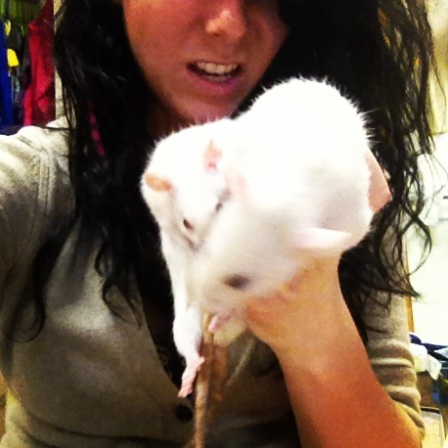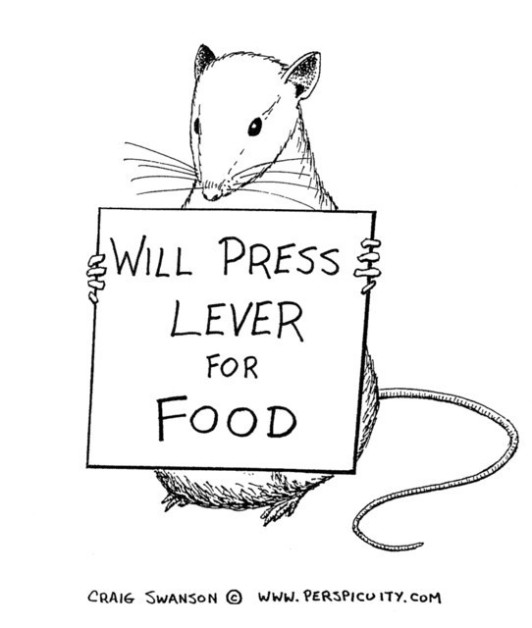“I hear those sleigh bells ringing…”
For as long as I can remember the winter has always brought me joy, warmth, happiness and the promise of a fantastic snowboarding season. I guess you can call me a winter enthusiast, hot chocolate by the fire, oversized sweaters and enough clothes to roll myself down a hill, let alone use a sleigh or board. I love everything about the winter, and compared to the blazing heat of the summer or the constant sneezing of the spring and fall, winter and I are a perfect fit.
Apparently some Grinches out there do not share the same love of the winter as I do. While the faint hope of snow and below freezing temperatures keep me going, to others this could be a rather depressing season, some could even say they get sad.
“Frosty the snowman was jolly happy soul…”
S.A.D: Seasonal Affective Disorder. It affects 10 to 20 percent of the population and is more common in men (“Seasonal affective disorder,” 2000). During the winter month’s SAD leaves people feeling blue, it is a form of seasonal depression that can start in the fall months and can continue to early spring or summer. Some symptoms of these winter blues include: depression, anxiety, loss of energy, oversleeping, appetite changes, craving of foods in high carbohydrates, weight gain, difficulty concentrating (Vorvick, 2012)
While Jack Frost nipping at my nose is welcoming to me, other can be very depressed over his appearance. Your chances increase every passing year for SAD, the elderly are more susceptible to Seasonal Affective Disorder than 20 year olds (“Seasonal affective disorder,” 2013).
Growing up it did not matter if it was 100 degrees out or negative 30, my mother would throw me outside to play, therefore getting more sunshine than those who were cooped up in the house all day. Could this be a reason that the elderly are more susceptible to SAD? Also when blizzard conditions hit I will be found on the slopes, while most people will be found in the food store scooping up the last of the milk, bread and eggs (I never understood that, the only thing you could make is french toast).
“I’m Dreaming of a white Christmas…”
But what really causes SAD? There could be a few factors that play a part in GAD, the first being genetics. Depression can be passed down in genes, and SAD is no exception. Those who have parents or a close relative with depression are two to six times more likely to have depression that those who have no family history of depression (Vorvick, 2012).
Genetics is a factor but not the only one; there are major biological factors that go into SAD as well. Serotonin is a neurotransmitter that can be supplied by the sun. In the winter, days are shorter and outdoor activities are at a minimum, therefore serotonin levels go down. Serotonin is vital for feelings of “well-being”, and imbalances can trigger depression or other mood disorders. There are several other neurotransmitters that can be involved including acetylcholine, norepinephrine, and others (Vorvick, 2012).
“Chestnuts roasting on an open fire…”
So how do you cope with SAD? In my personal opinion escaping to an island retreat is the only proper way to handle this (because everyone loves the islands). In reality there are ways to cope with SAD that are more realistic than flying to a remote island location for 3 months.
Light boxes are one way to bring sunshine into your day without escaping to the islands, or catching a cold. “Light boxes emit high intensities of light of 2,500 to 10,000 lux (as compared to a normal light fixture that emits 250 to 500 lux) and produce similar effects to the sun’s natural rays (Grohol, 2004).” The best use for these is periods of 30minutes up to 2 hours in the morning hours. Some people report that after 2 weeks the symptoms of SAD are gone.
Exercise has also proven to beat the winter blues. This could explain why winter sport enthusiasts are not bothered by SAD. It is proven that an hour of aerobic activity has the same benefits as a 2.5 hour light treatment. This aerobic activity doesn’t even have to be hard it can consist of spontaneous dance parties, Zumba, or a snowball fight with the neighborhood kids.
In the most severe cases of SAD medication may need to intervene. Anti-depressants medicines have been proven effective in making winter less dreary (Grohol, 2004).
“Cause Santa Clause is coming to town…”
Seasonal Affective Disorder may be the most commonly known disorder, but that doesn’t make it the only one. There are spring and summer seasonal affective disorders (also known as summer depression). The symptoms for this include: Anxiety, trouble sleeping, irritability, agitation, weight loss, and poor appetite (“Seasonal affective disorder,” 2013).
There is also Seasonal changes in bipolar disorder, and this effects people who suffer from bipolar disorder. In the spring and summer symptoms of mania or hypomania can be brought on. These would include: persistently elevated mood, hyperactivity, agitation, unbridled enthusiasm out of proportion to the situation, rapid thoughts and speech (“Seasonal affective disorder,” 2013).
“Silent night…”
I consider myself lucky to be able to face winter with excitement in my heart and anticipation in my mind. My love of the snow and icicle lined trees carries me like a child through the winter months. However, while I coo over the beauties there are other people who are less fortunate and dislike the winter, some would even say they get SAD.
“Later on, we’ll conspire,
As we dream by the fire
To face unafraid,
The plans that we’ve made,
Walking in a winter wonderland.”
Work cited:
Grohol, J. M. (2004, Novemeber). Treatment for seasonal affective disorder (sad). Retrieved from http://psychcentral.com/library/seasonal_affective_treatment.htm
Seasonal affective disorder. (2000, March 1). Retrieved from http://www.aafp.org/afp/2000/0301/p1531.html
Seasonal affective disorder (sad). (2013, July 13). Retrieved from http://www.mayoclinic.com/health/seasonal-affective-disorder/DS00195/DSECTION=symptoms
Vorvick, L. (2012, February 12). Seasonal affective disorder. New York Times. Retrieved from http://health.nytimes.com/health/guides/disease/seasonal-affective-disorder/

















